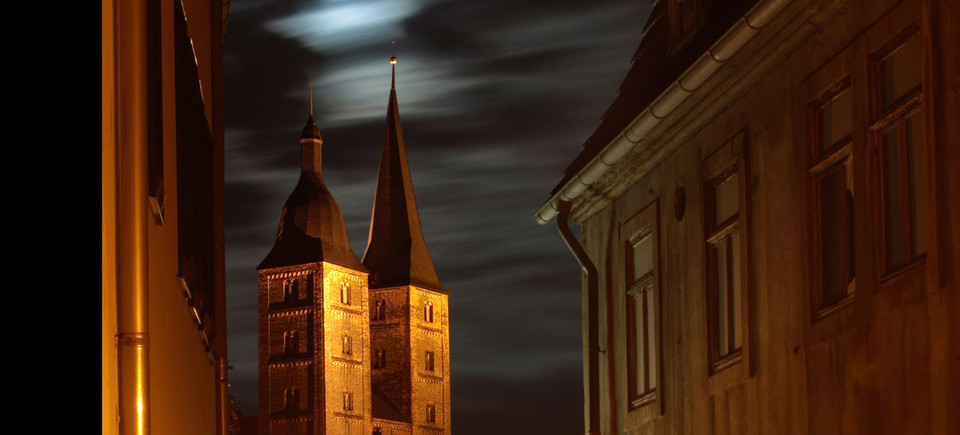Altenburg
A testing ground for the Reformation
The citizens of Altenburg turned to Martin Luther as early as 1522 when they asked to have a German pastor. Luther sent them his confidant Wenceslas Linck, who was also married by Luther in Altenburg in 1523 in one of the first clerical marriages ever. Luther came to Altenburg a total of 16 times, often to visit George Spalatin or merely to pass through on his way to Leipzig, Zeitz, or Coburg. In 1518 he met papal envoy Karl von Miltiz, who was bringing the pope’s coveted Golden Rose to the electors, and who also tried (in vain) to persuade the monk to remain silent. Luther’s wife, Katharina von Bora, owned an estate in nearby Zölsdorf, and his great-grandson also died in Altenburg in 1677, and is still buried at the city’s Church of the Brethren (Brüderkirche). Of particular interest, however, is the vividness with which the Reformation and its practical implementation at original locations can be experienced in Altenburg.
Luther Sites
The Red Points
The rise and dramatic fall of a building before and after the reformation is vividly depicted here. Emperor Frederick Barbarossa provided money for the construction of the mighty monastery and was even at its inauguration in 1184. Built by Italian monks, the building is a perfect example of Hohenstaufen Romanesque. The stubborn Augustinian monks who lived there were a thorn in George Spalatin’s side for almost 20 years. After the monastery was closed it was used in a variety of ways over the years. The towers, the Red Points, are all that remain, and now serve as the city’s landmark. National cultural heritage.
Castle Church
On the way to the castle visitors never lose sight of the Castle Church and the former St. George collegiate church. George Spalatin became the canon here and also met Martin Luther here. The fanciful carved choir stalls and murals made by an Italian master date from this period. The elaborate baroque interior is as equally impressive as the sound of the large organ built by ‘Thuringia’s Silbermann’, H.G.Trost, which was even praised by Bach. Bach’s favourite pupil J.G. Krebs played the organ and composed music on it while a cantor here for more than 50 years.
The Church of the Brethren
The present church, with its opulent Art Nouveau mosaics, was built on the foundations of the former Franciscan monastery in 1905. The Franciscan monks operated a hospital and school, but at Spalatin’s urging had to close the monastery in 1529. Spalatin then set up schools for boy and girls. A large sculpture on the façade recalls both Spalatin and his friend Luther.
St. Bartholomew’s Church
As early as 1521 Altenburg’s citizens requested Luther send a pastor to their parish church. Initially Wenceslas Linck came to Altenburg, and then George Spalatin arrived, a reformer who was well-connected in imperial politics. The Reformation left little unchanged in the daily life of the community. Spalatin introduced visitations and reorganised social and spiritual care in the city and region. His grave stone is located here. Martin Luther also preached many times in this gothic hall church, which has a Romanesque crypt. The Baroque church tower with its small tower room offers visitors a beautiful view across the city. European cultural heritage at its finest.









